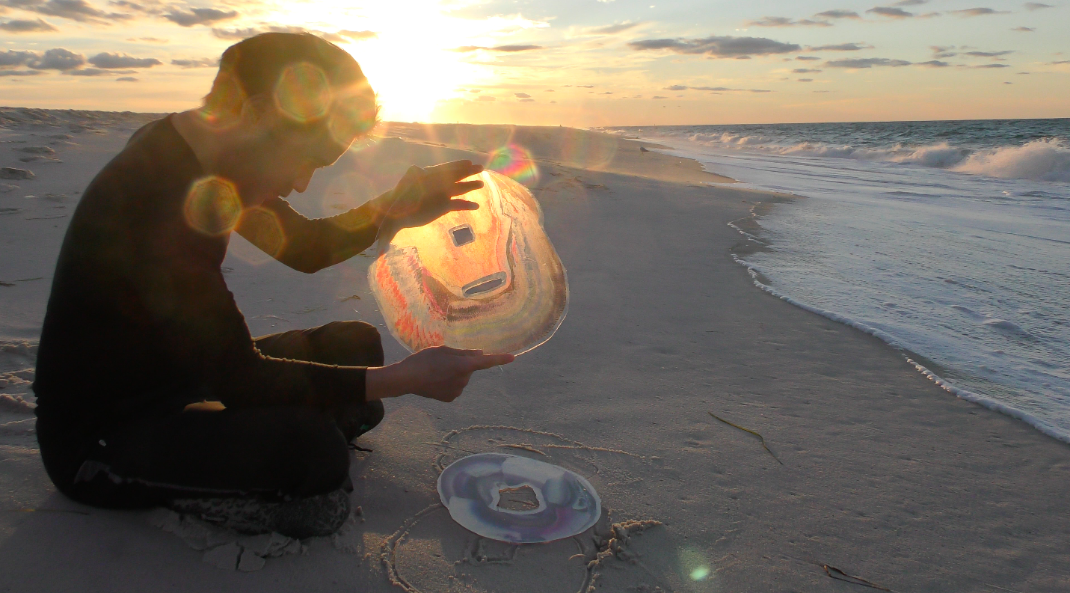Televisual Painterly Gesture. Gwangu Biennale 2018
In my installation at the pavilion of the Philippine Contemporary Art Network at the 2018 Gwangju Biennale, I attempt to liquefy the autonomy of the the unique painterly swath and to break down traditional, non-existent, imagined borders between television, abstract painting and sculpture. In the exhibition, I use glass as an essential material that adjoins the spheres of the televisual with the painterly and the sculptural with the illusionistic. Glass is the border that holds together potentially obstinate structures of disparate mediums of artmaking. It creates a sturdy frame that consolidates ungovernable electronic moving images and acts as a sculptural piece on its own.
The painting studio is an intimate space where ideas are cultivated and gestures are performed. Like a hothouse, it is a site for self-cultivation. It exists within a larger world, yet must thread its own axis which swirls around the borders of reality and imagination. Its direction is orbicular, constantly creating curiosities, doubts and beliefs.
To prod painting‟s Other (unknown sphere), I explore the reconsideration of the brushstroke as a performative signature of the mind‟s interiority and the individual aesthetic gesture of the body‟s phenomenological sensitivity to all that is present in the painting studio. Thus, I transport the painterly swaths from the studio to a computer digital lab to a printing press to a glass fabrication shop which result to the creation of a new team of hybrid sculptures with subsequent corporeality.
These sculptures then perform as actor-protagonists in a phantasmagoria of succession of televisual images in a video titled “Televisual Painterly Gestures”. They are released to the outside world to adjoin, twist and collide with nature and the man-made. A video camera captures these cross-fertilized and hybridised illuminated sculptures as they traverse terrains of the Big Sur in California; New York‟s Long Island; Baler, Tagaytay and Manila Bay in the Philippines and Gwangju, Korea‟s Mudeungsan Mountain. In their abstract play of illumination, color, image and sound, the televisual hybridised forms challenge the language of description and the language of television while exploring abstraction beyond the merely non- representational and formal.
